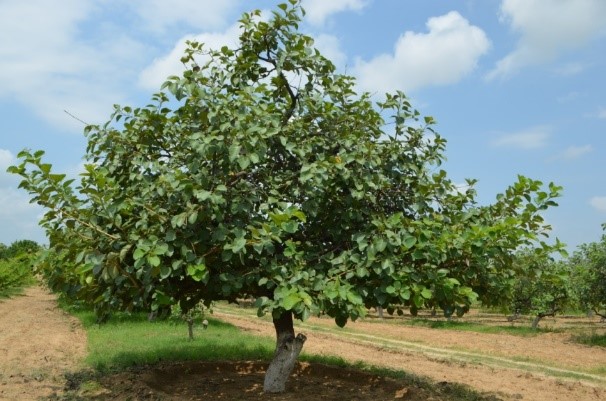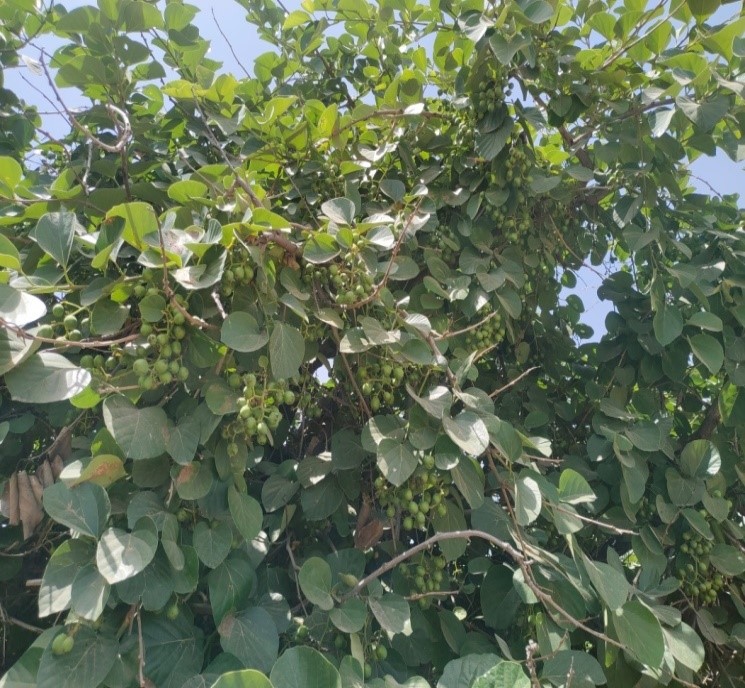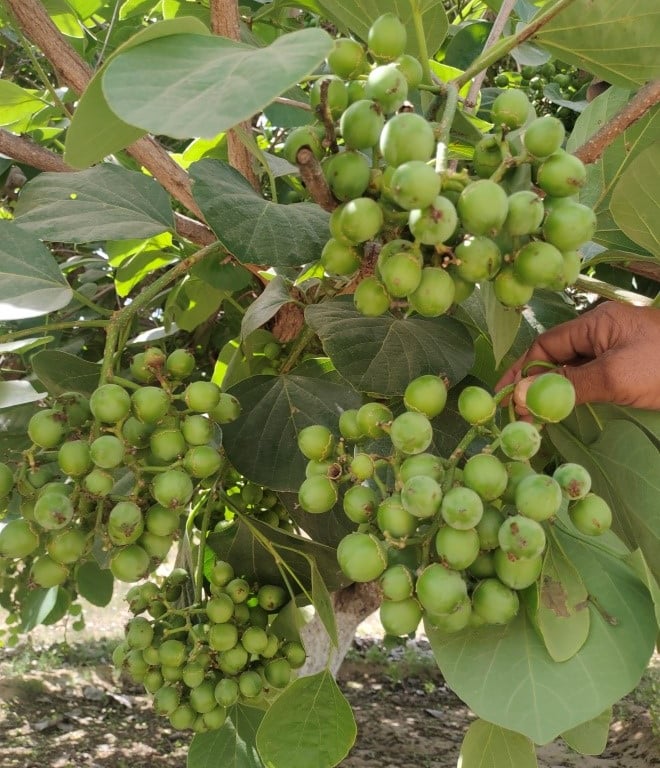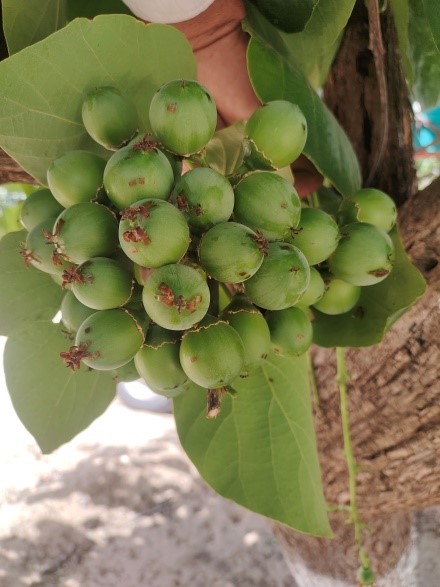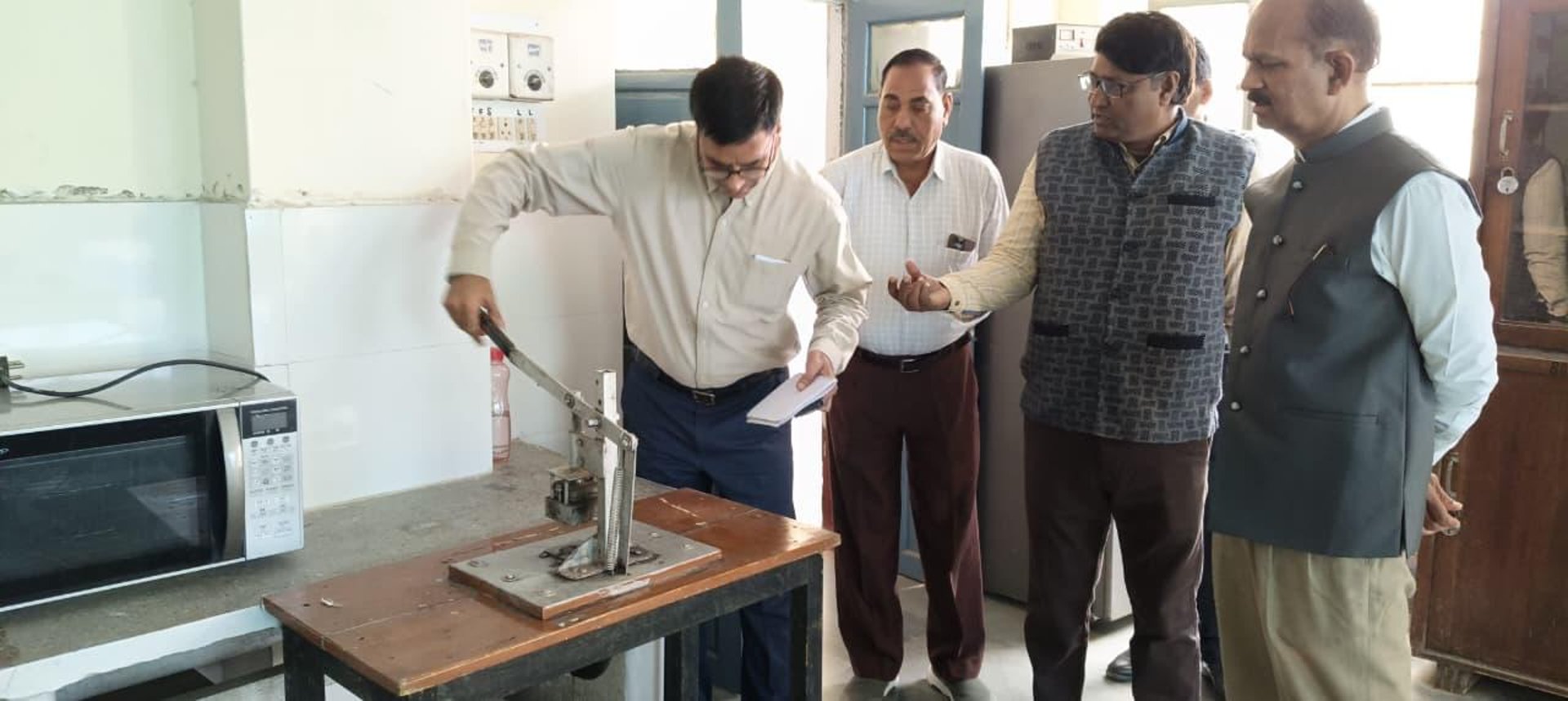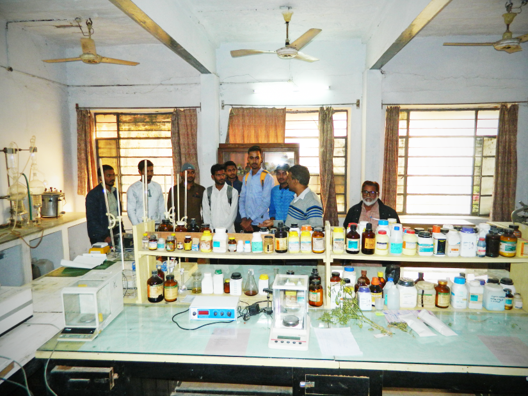Department of Horticulture
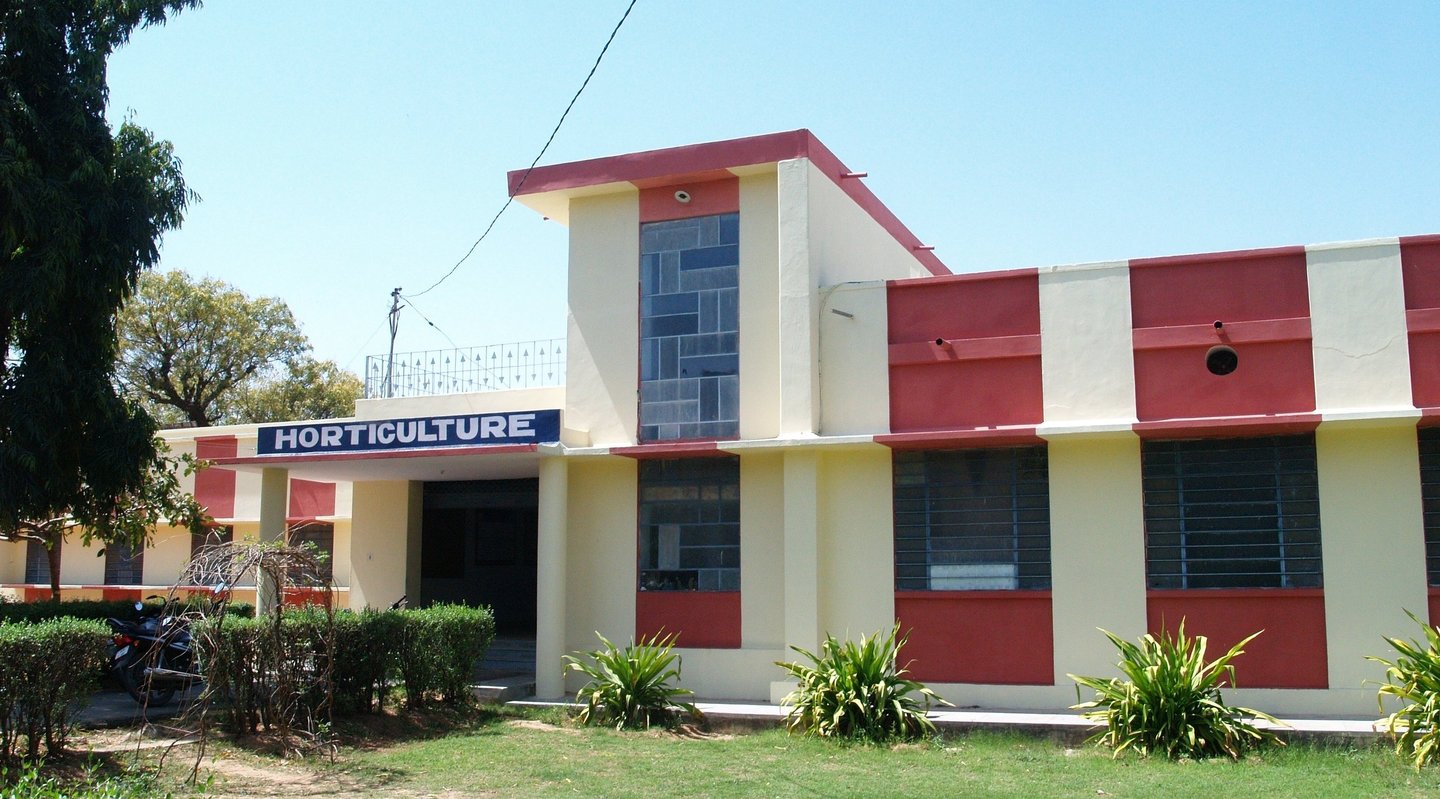

Identity of the Department, Aims and Objectives
The Department of Horticulture came in existence in 1964 with initiation of M. Sc. (Ag.) Horticulture programme. Further, Ph.D. (Horticulture) was started in 1966 . Presently, the department serves as a core facility to run the teaching programme for Undergraduate, Postgraduate and Ph. D. students. A well-knit UG and PG programme with updated syllabi has been offering in the department. The faculties of the department are well trained and having hard working capabilities. The research work has been programmed as per the need based of the area. The department serves for various extension activities for dissemination of resource management strategies to the farming community. The department has the mandate to impart training to various scientific personnel working in Govt. departments and NGO’s less privileged affiliated institutions strengthening the human resource management. The department has also the mandate to develop cost effective and appropriate production technology of fruits, vegetables, flowers, medicinal and aromatic plants and their post harvest management for efficient and optimal use of resources in a sustainable manner. It also has the responsibility for transfer of technology to the farmers and other user agencies in the jurisdiction of the university.
At present, one AICRP on Arid Zone Fruits Project (ICAR) and two ad-hoc projects are in operation. This department is a pioneering institute for research work in the field of arid fruits. The department has two research/ instructional farms viz., (i) The first farm is located in the college campus , known as Horticultural Farm which has an area of 10 ha, (ii) The other farm is known as Asalpur farm that is located at Asalpur village about 10 km from the main campus and has an area of 85 ha. The department has well equipped UG and PG laboratories, poly house, Nursery of Fruits and ornamental plants as well as fruit orchards of ber, lasoda, aonla, datepalm, karonda, bael etc.
Vision/Aims
To achieve excellence and relevance in education to develop quality human resource, undertake basic and applied research for development of technologies and also coordinate the education, research and extension activities for augmentation of horticultural production.
Objectives/Thrust areas
Promoting holistic higher education in the field of horticulture by the way of incorporation of knowledge and skill.
Assuring quality and relevance of higher education by accreditation and periodic revision of course curricula.
Modernization of horticulture farms.
Improving faculty competence through training, summer/winter/short /refresher courses and participation in seminars/symposium/conference etc.
Building excellence in specific strategic areas in horticulture education and research through Niche areas of excellence.
Linkages with National and International institutions for teaching and learning resources management.
Ongoing and concluded projects
Concluded projects
Development of Agro-techniques for increased secretion of gum in guggal gum (Commiphora wightii) in Rajasthan: This project was sponsored by ICAR, New Delhi. This project was started in April, 1985 and concluded in 1990.
AICRP on Post Harvest Technology: This project was started in 1994 and concluded in 2003.
Central sector scheme for development of agro-techniques and cultivation of medicinal plants: This was an ad-hoc project sponsored by Ministry of Health and Family Welfare, Govt. of India. This project was started in 2000 and concluded in 2003.
One year’s Rural Youth training programme: This project is sponsored by Govt. of Rajasthan under, National Horticulture Mission and started in April, 2013.
RKVY project entitled on Validation and post-harvest technology of Dragon fruit and Fig under semi-arid conditions of Rajasthan. Years 2016-17 to 2018-19.
B. Ongoing Projects
AICRP on Arid Zone Fruits: This project was transferred at Jobner from Udaipur in 1984. Earlier this project was started at Udaipur in 1976 under the ad-hoc scheme “Research on some selected fruits in the semi-arid areas in India”. It continued as ad-hoc project up to 1980 after which it was evaluated to the status of co-ordinated research project from 1980 and remained at Udaipur. Research at udaipur was concentrated on aonla, ber, custard apple, cordia, fig, phalsa and pomegranate. At Jobner, the research work is envisaged with the aim to generating appropriate fruit growing technology for the arid regions of the state with particular reference to arid fruits such as ber, aonla pomegranate etc., with a view to building up a viable commercial cultivation of fruit crops and thus improve the economic condition of the people, their nutrition and health standards.
Experimental Learning unit on Commercial Horticulture: This project is for RAWE student and started in March, 2013.
RKVY project entitled on “Development of Organic Package for Ber, Bael, Jamun and Pomegranate under Semi-Arid Ecosystem of Rajasthan” started in 2023.
Facilities available in the department
Post graduate laboratory equipped with UV Spectrophotometer, Leaf area meter, Laminar flow, Flame-photometer, BOD incubators, Deep Freezer, Refrigerated centrifuge, centrifuge machine, Precision electronic balances, PH and EC meter, Hot bath, single and double distillation unit, microscope etc. for research on bio-chemical analysis, nutrient analysis, pathological analysis and other analytical work.
Under graduate and Post graduate laboratory for post-harvest technology and value addition to conduct experiments and practical classes.
Horticultural Research and instructional farms having vegetables and orchards of fruit plants like Ber, Aonla, Lasoda, Bael, Date plam, Karonda etc.
Model nursery equipped with polyhouses and shade nets for the production of fruit, flowering and foliage ornamental plants.
Crop cafeteria of fruit plants.
Seminar room well equipped with Audio-visual aids.
Staff Information


Name: Dr. S. P. Singh
Designation: Professor & Head
Specialization: Vegetable Science
Contact: 9414931579
Email: spsingh.horti@sknau.ac.in
AEIS Profile Link:


Name: Dr. O.P. Garhwal
Designation: Professor
Specialization: Vegetable Science
Contact: 9414236210
Email: mr.garhwall@rediffmail.com
AEIS Profile Link: https://aeis.icar.gov.in/Om3582


Name: Dr. R.P. Ghasolia
Designation: Professor
Specialization: Plant Pathology
Contact: 9414326672
Email: rpghasolia.ppath@sknau.ac.in
AEIS Profile Link:


Name: Dr. Rajeev Kumar Narolia
Designation: Associate Professor
Specialization: Vegetable Science
Contact: 8442018054
Email: rknarolia.horti@sknau.ac.in
AEIS Profile Link:


Name: Dr. M.L. Choudhary
Designation: Associate Professor
Specialization: Fruit Science
Contact: 9461245870
Email: mlchoudhary.horti@sknau.ac.in
AEIS Profile Link:


Name: Dr. Devi Lal Bagri
Designation: Assistant Professor
Specialization: Plant Physiology
Contact: 8233546210
Email:dlbagri.pphy@sknau.ac.in
AEIS Profile: https://aeis.icar.gov.in/Devi3448




Name: Dr. Mahendra Meena
Designation: Assistant Professor
Specialization: Vegetable Science
Contact: 9351470653
Email: mahendra.horti@sknau.ac.in
AEIS Profile Link:
Former Heads
Dragon Fruit and Anjeer Fields
Dragon fruit and anjeer (fig) fields are a sight to behold. The vibrant hues of the dragon fruit plants and the lush greenery of the anjeer trees create a picturesque landscape. As you walk through the fields, you are greeted by the sweet aroma of the dragon fruit flowers and the earthy fragrance of the anjeer leaves. The dragon fruit plants stand tall with their succulent, red or white fruits hanging delicately from their branches. Meanwhile, the anjeer trees provide shade and a sense of tranquility with their sprawling branches and abundant figs. It is truly a magical experience to wander through these fields, appreciating the natural beauty and marveling at the abundance of these exotic fruits.


Achievements/ Recommendations/ Findings
A. Department
Awarded 257 M. Sc. (Ag.) Horticulture and 43 Ph. D. (Horticulture) degree up to 2023 .
Aonla Pricking machine: Hand operated & Power operated models were designed, standardized and fabricated. (National Award was received for invention of these models).
Palak cv. Jobner Green and Lasoda var. Karan Lasoda were evolved.
B. Development of Agro-techniques for increased secretion of gum in guggal gum (Commiphora wightii) in Rajasthan.
Survey and collection of germplasms of guggal from different forest areas of Rajasthan.
Standardization of propagation techniques.
Determination of essential oil in twigs and leaves and chemical analysis of oleoresin (gum) of guggal.
C. AICRP on Post Harvest Technology
Standardization of drying technology of under- utilized fruits i.e, Ker, Lehsua, Sangri, Kumtia and vegetables i.e, Kachri etc.
Standardization of extraction of aonla and ber juice through osmosis process.
Standardization of methodology of preparation of Karonda candy.
D. Central sector scheme for development of agro-techniques and cultivation of medicinal plants
Standardization of agro-techniques of medicinal plants like Kantkari (Solanum surattense Burm. f.), Pitpapda (Fumaria parviflora Linn.) and Chingari (Clerodendrum indicum (Linn.) Moon Syn. C. siphonanthus C. B. Clark).
E. AICRP on Arid Zone Fruits
I. Agro-techniques
a. Ber
Under nutritional trial of ber, application of 500 g N2, 500 g P2O5 and 50 g K2O in the month of July (except half dose of nitrogen which is to be applied in the month of November) was found effective for getting maximum fruit yield.
Best method of ber propagation was standardized in which root stock prepared in polythene tubes and budded 100 days after seed sowing combined with defoliation at budding time gave maximum budded success.
Under standardization of propagation technique in ber, sowing of seeds in situ and budding with desirable scion was found better than sowing in nursery beds, defoliation and budding after transplantation.
Zizyphus rotundifolia was found most suitable root stock for cultivar Gola where it exhibited maximum plant spread, stem girth, fruit yield per plant as well as quality of fruits.
Very light pruning i.e, at about 25 buds (after 8th secondary) proved as the best pruning method in ber.
Application of Diuron (pre-emergence) followed by Glyphosate (Post–emergence) @ 2.0 Kg/ha was recommended to check weed population in ber orchard. Treatment also improved the plant growth and increased fruit yield /ha.
Pre-harvest application of 750 ppm 2-chloroethylephosphonic acid (Ethephon) was found useful in inducing early maturity of ber fruits when sprayed at colour turning stage (about one week prior to the anticipated first harvest). The treatment also reduced the number of pickings from five to three.
Sampling of immature young leaves at flowering stage was gave right indication of NPK status in the ber plant.
Different ber orchards of Rajasthan situated in Bharatpur, Dholpur, Dausa, Jaipur, Karauli districts have been surveyed for nutritional status. Observations showed that the leaf samples collected from Bharatpur and nearby areas were higher in nitrogen, phosphorus, calcium and magnesium content. Potassium content was higher in leaf samples collected from Jaipur area. The soil samples were also showed the same trend.
Use of mulches has been found beneficial in increasing fruit yield in ber. Black polythene and local grasses were equally effective as mulch material to conserve moisture in the soil and fruit yield per plant.
Spraying of sulphluric acid (0.05%) was found most effective treatment in ameliorating the effect of frost followed by cycocel 250 ppm spray in ber.
Zizyphus rotundifolia used as rootstock was performed better at high salinity level in the soil owing to its higher rates of net photosynthesis and transpiration, osmotic adjustment, chlorophyll retention restricted translocation of sodium from root to leaves as well as higher accumulation of potassium in the leaves.
b. Aonla
1. Patch budding during mid August was found most preferable for aonla propagation.
2. Application of pendimethalin (pre-emergence) followed by glyphosate (post-emergence) @ 2 kg a.i./ha applied at six-month interval was found most economical treatment than other treatments to control the weeds in aonla orchards.
c. Pomegranate
Fruit cracking in pomegranate was reduced maximum with borax 0.2% followed by GA3 100 ppm. Yield data revealed that borax increased yield maximum over other treatments albeit application of GA3.
Two foliar spray of ZnSo4 @ 0.06% at the time of flowering and fruit set during Mrig bahar was significantly increased yield in pomegranate cv. Ganesh.
In sampling techniques for nutrient analysis, young leaves were found to contain the highest N, P, and K contents during February to July.
Drip irrigation studies were conducted in cv. Ganesh. Maximum fruit yield was recorded with 60% evaporation replenishment.
d. Lasoda (Lehsua)
Lasoda (Lehsua) fruits blanched by dipping in boiling water containing Magnesium oxide solution 4 g per litre for 5 minutes followed by de-stoning and given sulphitation treatment by soaking in potassium meta-bi-sulphite solution 1 g per litre. These treated fruits were dehydrated under solar drier to obtain best quality of dehydrated fruits with maximum returns.
II. Plant Protection
i. Insect & pest
Ber
i. IPM comprising digging of soil in the basin and mixing of 50g insecticidal dust and spray of Monocrotophos 0.05% at Initiation of monsoon followed by three sprays of Monocrotophos 0.03% starting from pea stage gave complete protection against insect pests of ber at Jobner.
ii. Minimum damage of ber stone weevil, Aubueus himalayan was found in foliar spray of carbaryl 0.1%, given just before fruit set. This treatment also recorded good population of honey bee (as post treatment) and better fruit set per cent in ber.
iii. Foliar spray of Azadirachtin 1% at 1 ml/liter water, just before fruit set and subsequently spray after three weeks was effectively control the ber stone weevil.
iv. Two foliar spray of NSKE 5% per liter water at 15 days interval starting from 50% fruit set was effectively control the ber fruit fly.
Aonla
i. Three foliar sprays of Cypermetharin (0.005%) or Endosulfan (0.05%) at the onset of monsoon at 15 days interval was found best treatment to control the stem capsule caterpillar in aonla at Jobner.
ii. Deshi aonla seedlings were found least susceptible against leaf midge. Whereas, var. NA 10 was found moderately susceptible and Chakaiya & NA-6 were found highly susceptible at Jobner.
iii. Aonla leaf gall midge was effectively control by the foliar spray of Endosulfan @ 0.07% starting from onset of the monsoon at Jobner.
iv. Studies on population dynamics of aonla leaf gall midge, Asphondylia phyllanthi showed that pest initiation starts in the month of March in field, hence it is right time for starting the insecticidal sprays against the pest.
v. In aonla, maximum damage of stem capsule caterpillar (Betousa stylophora) was found in NA-5, whereas, minimum in Deshi at Jobner conditions.
c. Pomegranate
i. Plugging of holes with mud and chemical spraying with Dichlorvos 0.08% or Monocrotophos 0.08% or Diamethoate 0.08% or Fenvulerate 0.04% or Carbaryl 0.1% or injection of these chemicals (5%) checked the damage of bark eating caterpillar in pomegranate at Jobner.
ii. Diseases
a. Ber
1. Under epidemiological studies it was found that ber powdery mildew initiation takes place in the month of October in Jobner conditions. Therefore, two prophylactic fungicidal sprays can be recommended at 15 days interval starting from October first fortnight.
2. Ber cultivar “Sev” was found resistant to ber powdery mildew.
3. Ber cultivars Noki, Tikadi, Thornless and ZG-3 were found resistant against Isariopsis leaf spot.
4. Weeds namely phyllanthus tratemus and Xanthium strumarrium were found collateral hosts of ber powdery mildew.
5. Three foliar sprays of Karathane EC (0.1%) at 15 days interval is recommended for control of ber powdery mildew. The prophylactic spray should be given just after initiation of the disease.
b. Aonla
1. Under epidemiological studies it was found that aonla rust disease initiation takes place in the month of August at Chomu (Jaipur) conditions. Therefore, the prophylactic fungicidal spray can be recommended in the last week of July.
2. Local aonla germplasm namely JA-3, JA-5 and JA-6 were found free from aonla rust.
3. On the basis of cost benefit ratio, four sprays of chlorothalonil (Kavach –75 WP) 0.2% at 15 days interval was found most effective to control the aonla rust followed by six sprays of chlorothalonil (0.2%) at 10 days interval.
4. The occurrence of dieback (Botryodiplodia theobromae) disease in aonla trees has been first reported in the state.
5. Dipping of aonla fruit in the solution of Azadirachtin leaf extract (5%) or Curcuma longa rhizome extract (5%) for 15 minutes was recommended for the control of blue mould rot and Aspergillus rot of aonla.
6. For integrated pest-disease management (IPDM) studies, two sprays of Azadirachtin 0.3% at 15 days interval in the month of April followed by two sprays of chlorothalonil 0.2% during august is recommended for control of aonla rust whereas, for managing leaf gall midge in aonla, two sprays of Azadirachtin 0.3% at 15 days interval during April followed by two sprays of Endosulfan (0.07%) in the month of august at 20 days interval is recommended.
7. New post –harvest fruit rot of aonla incited by Penicillium fallutanum reported as a new pathogen from this centre.
8. Four foliar sprays of chlorothalonil (0.2%) or Trichoderma (0.1%) + chlorothalonil (0.1%) are recommended for effective control of aonla rust. First prophylactic spray should be initiated in the first week of august. Subsequent three sprays are to be given immediately after the appearance of the disease at 15 days interval.
Bael
1. Under the study carried out to find out cause of wilting/ drying in bael plants Fusarium solani was found responsible for the root rot disease.
Scheme: AICRP on Arid Zone Fruits
Achievements: Variety developed
Fruit crop Laosda (Cordia myxa) Karan Lasoda {JL-07 germplasm} (IC No. =IC-0598679 Scions) was identified for release as variety in 22nd Annual Workshop of “ICAR-AICRP on Arid Zone Fruits” held at Anantapuramu, Andhra Pradesh from 16-02-2018 to 18-02-2018.
The specific character of the variety
Twice a year fruiting i.e. April-May and off season fruiting in winters.
Bigger sized fruits with more pulp content, small stone size & suitable for preparing pickle.
Bunch weight is 180-220g (20-27 fruits per bunch).
Fruit yield = 80-90kg per plant.
